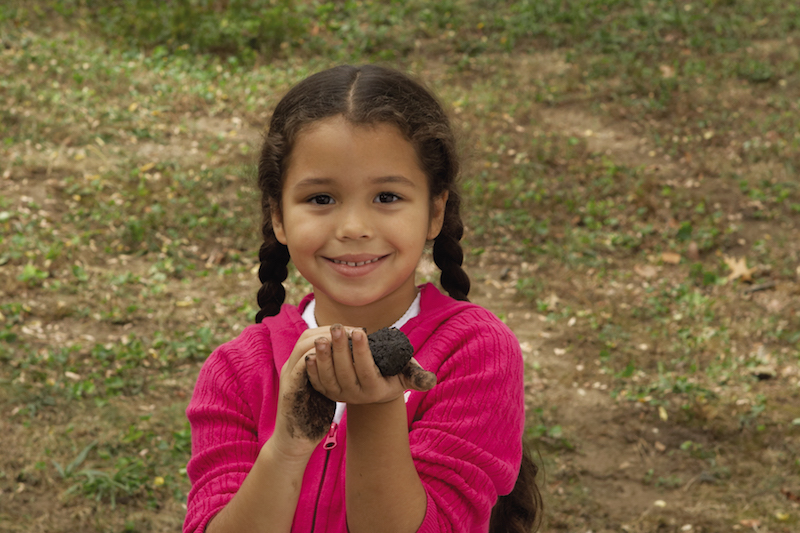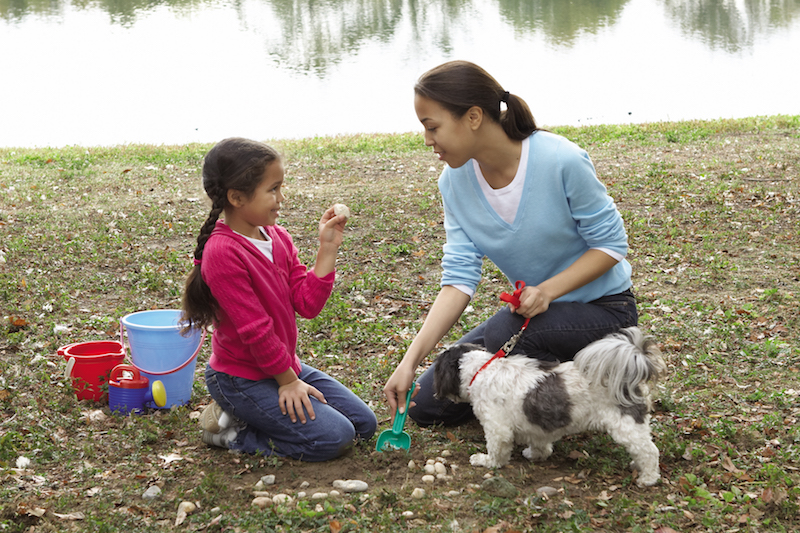
14 Oct 9 simple ways to add STEM activities to your child’s day
If you have older children, you’re probably already familiar with STEM. But STEM education isn’t just for school-age children. Experts say it’s never too early to start STEM activities. That’s because young children are natural investigators. They’re already curious about the world around them.
What is STEM?
STEM stands for Science, Technology, Engineering, and Math. Activities that are STEM-based integrate these four areas of learning. For example, a block-building activity can involve experimenting and learning about the natural world (Science), using tools to measure (Technology), solving a problem during building (Engineering), and comparing sizes of blocks (Math).
Why is STEM important for preschoolers?
Early STEM education supports preschoolers’ overall learning and academic success. It develops early critical thinking and reasoning skills. And, it can spark their interest in later studies—and careers—in STEM-related fields. Jobs in these fields include engineers, scientists, computer programmers, web and software developers, accountants, and financial planners, among others. You might not be thinking that far ahead for your inquisitive preschooler. But you may want to.
According to the U.S. Department of Commerce, jobs in STEM-related fields are growing at 17 percent. This group is the next generation of innovators. The country needs innovators to make sure it’s successful in the future. And the icing on the cake? Graduates with STEM degrees have higher incomes than other graduates even when they work in non-STEM careers.
Can preschoolers really learn STEM?
Absolutely! In fact, STEM should be included in all pre-K programs, according to Russell Shilling. Shilling is the executive director for STEM at the U.S. Department of Education.
At a May 2016 national conference on STEM education, Shilling had a lot to say about early STEM education. “We are underestimating kids,” he said. “Life-long learning should start in pre-K for STEM education.” The Department of Education is working on its vision for STEM learning in the U.S. for the next 10 years.
Ok, I’m sold! What can I do to start STEM activities for my preschooler?
It’s actually very easy to add early STEM activities to your child’s learning at home. In fact, you’re probably already doing this without even realizing it!
Here are 9 guiding rules for teaching STEM to preschoolers, along with some activities you can try at home.
Rule 1. Use your child’s natural curiosity to guide her investigating further.
Just think about all the questions your preschooler asks you every day. Can you count them? No? Well, according to research, young children ask between 76 and 95 information-seeking questions per hour! Most of these questions are about the world around her. Depending on the time you have, take one of her questions and investigate with her to answer it.
Try this!
On a rainy day, your child asks, “Where does rain come from?” With your child, you can observe the rain falling, describe it, and measure it with a rain gauge. You can ask your child questions to get her to notice the dark clouds in the sky. You can point out dried-up puddles later and explain that the sun made the water warmer. Then, explain that the water changed into something else (water vapor) and went up into the air. You can even help her make a cloud in a jar. Here’s how:
- Fill a small metal pan with ice and let it get cold.
- Pour an inch or two of warm water into a jar.
- Cover the mouth of the jar with the pan of ice.
- A small cloud will form under the pan. Ask your child questions about it.
- Explain that when the water in clouds gets heavy, it falls down as rain.
Rule 2. Go ahead…be a kid again!
Get down on the floor and play with your child. Watch her build with blocks and ask questions about what she’s building. Pose questions about what might happen. For example, ask, “What do you think will happen if you put the heavy block on top?” Foster your own sense of curiosity about the world around you. Let your child see you asking questions about things. If you don’t know the answer, find out! Then, share the answer with your child.
Try this!
Challenge him to build new structures, such as a bridge for his action figures to get from a chair to the couch. Let him problem-solve when building the bridge, helping when necessary. Ask him questions about what went wrong or what went well.
Rule 3. Question everything! But use questions that encourage creative thinking.
The best STEM activities for preschoolers involve plenty of questions. But you don’t have to answer them! Instead, you can be the one doing the asking. Ask your child questions as you explore a concept together. But make sure they’re open-ended questions that don’t require just “yes” or “no” answers or only one “right” answer. Here are tips on asking open-ended questions:
- Ask questions that start with “What”—not “Why.” The Boston Children’s Museum’s STEM Sprouts Teaching Guide recommends asking “what” questions instead of “why” questions. If you ask a “why” question, your child might think there is only one correct answer. Instead, questions that start with “what” focus on what is happening or what the child is doing. The idea is to help your child observe and then communicate. You’re also building his confidence because he can answer these questions with his own hands-on knowledge.
- Ask questions that help her learn to predict. Questions like, “What do you think will happen next?” help your child learn to predict. Predicting is an important critical-thinking skill.
Let your child ask questions, too! Give your child opportunities to ask questions about the world around her. This means slowing down. It means taking the time to notice everyday events that you might not think are wondrous—but your child does. In an article on early STEM education, Joshua M. Sneideman says that “by simply allowing them to investigate, by encouraging them to ask questions about the real world, you are engaging children in STEM.”
Try this!
While discussing the power of wind, fill a shallow pan with water and gather several objects that float. Then, let your child blow through a straw at each object in the water. Ask questions such as: “What happened when you blew on the feather?” or “What do you think will happen when you blow on the cork?” You can also play “Does It Sink or Float?” using objects that sink and those that float.
Rule 4. Get outside! NOW!
 How can your child learn about the natural world when he has four walls around him? So take him outside and help him explore! Sneideman says that this simple activity is one of the easiest ways to teach STEM to preschoolers. Children are natural explorers, and the living world is like a new and exciting frontier for them.
How can your child learn about the natural world when he has four walls around him? So take him outside and help him explore! Sneideman says that this simple activity is one of the easiest ways to teach STEM to preschoolers. Children are natural explorers, and the living world is like a new and exciting frontier for them.
Try this!
Go on a nature walk. Let him collect natural objects, like leaves, flowers, and acorns. Investigating natural objects can lead to many different STEM activities. For example:
- Sort different types of leaves and then learn about the diversity of trees and their leaves.
- Pick up rocks, count them, and compare them by color, size, and shape.
- Throw rocks in a pond and ask questions about how rocks sink while other things, like acorn caps, float.
Rule 5. Use familiar, everyday things to explore the world.
Kitchen tools, bowls, containers, yarn, tape, and other everyday objects can be used in different contexts for many early STEM activities. Got a spoon? It can become a catapult for a ball when it’s placed on a triangle block. Do you have yarn? Lengths of yarn can be used to measure things. And don’t forget the five senses! Your child can use touch, smell, taste, sight, and hearing to learn about the world around her.
Try this!
Add different sizes of cups and a small plastic pitcher to your child’s bathtub. As she pours water from the pitcher into the cups, ask her questions. For example, ask, “Do you think that cup will hold more water?” and “Does this cup hold a lot of water or just a little?”
Rule 6. Create an environment filled with things for building and exploring.
We know it’s frustrating when you buy a huge toy for your child and all she wants to do is play with the big box it came in. But this type of play is actually the best way to develop young brains! When you have plenty of open-ended materials on hand, then your child can decide how he wants to use them. Here are some everyday materials and ideas for using them:
- Short lengths of rope can be used to create pulleys.
- Shoeboxes can be glued together to make a robot.
- Recyclable plastic containers and boxes can be used for building things.
- Old telephones and computer keyboards can be taken apart and investigated.
- That oversized delivery box can become a cool fort.
Try this!
Set aside a few recyclables a week that your child can use in building. Then, let her take the lead and see what she creates!
Rule 7. Turn your kitchen into a research lab.
Ordinary, everyday cooking can quickly become an early STEM activity when you add your child into the mix. Here are some ways to add STEM in the kitchen:
- Invest in a safe step stool so he can get close to the kitchen counter.
- Let him help when you’re measuring ingredients.
- Have him count the number of eggs or scoops of flour.
- Help him notice how materials change when they are heated or cooled, or when other substances are added.
- Discuss where food comes from. A simple orange juicing activity can turn into a discussion and investigation about where oranges come from.
- Keep in mind that there are going to be spills along with the thrills. So don’t get upset if your kitchen gets messy. Just ask your child to help you clean it up!
Try this!
The Boston Children’s Museum’s STEM Sprouts Teaching Guide suggests this activity for a preschool class, but it can easily be done at home. Let your child pick out 6 apples at the grocery store. Allow her to choose different kinds—but keep in mind that you’ll be using them to make applesauce. Let her compare how the apples are similar and different. Have her count them. At home, follow these steps to make applesauce:
- Cut and peel the apples.
- Supervise your child as she uses a safe or plastic butter knife to cut the apple slices into smaller pieces.
- Help her measure the slices in cups and add them to a pan.
- Add about ¼ cup of water.
- Cover and cook the apples on the stove for about 15 minutes.
- Put the soft apples in a bowl and have your child mash them with a potato masher.
- Ask her questions, such as, “How did the apples feel when you were cutting them? How do they feel now? What happened to the apples when we heated them up?” Encourage her to use words like hard, soft, and mushy.
- Let her taste the applesauce once it cools. If you want, ask her if she’d like to add anything. She could add a little cinnamon or another ingredient she likes, such as raisins.
Rule 8: Reflect on things that happen.
By letting your child figure out what happened in an activity or experiment, you are helping him understand cause and effect. This is an important critical thinking skill that will help him understand complex processes in school and in life.
Try this!
After making applesauce in the kitchen (shown in Rule 7), ask your child questions about what happened. Ask, “What caused the apples to get so soft? How did you make the apples even softer? I wonder what would happen if we left the peels on the apples.”
Rule 9: Use that phone for learning!
Admit it…you probably have your cell phone in your hand right now. Instead of checking your Facebook or Instagram, use it as a tool for learning! Here are some simple ideas:
- With your child, capture sounds on your phone by using the audio. Then let your child compare the sounds and identify the differences. Have her guess the sounds, or predict what will happen next.
- Take photos of things you see on a nature walk. Then, talk about the photos with your child later.
- If your child is learning about the power of wind, show her a video of strong winds blowing trees (as in a hurricane). Let your child take a video of a process.
Try this!
If your child wants to learn about shadows, take a picture of a stationary object’s shadow in the morning. This could be the shadow of a tree or mailbox. Then, take another picture of the same object’s shadow in the afternoon. Pull up the photos side-by-side on a pad or computer screen. Then, ask your child questions about what is different in the photos.
These are just 9 easy ways to integrate early STEM learning into your child’s day. The possibilities are endless. Do you have STEM ideas of your own to share? Add them in the Comments section below. And be sure to check out the STEM activities in Dilly’s Tree House family engagement program, too! LEARN MORE.

Maureen Castello
Posted at 22:52h, 19 OctoberI’m confused about the use of her and him.
Susan Light
Posted at 10:00h, 20 OctoberThanks for commenting, Maureen! We want to be sure and include both genders in all of our activities, and the use of the pronoun “they” when referring to one child isn’t quite grammatically correct.
Chris Carlson
Posted at 23:59h, 23 OctoberThis is so interesting! So many fun and educational ideas. I am sharing it with my daughter of four year old twins. Thank you!
Preschool STEM activity
Posted at 10:30h, 15 November[…] check out our post 9 simple ways to add STEM activities to your child’s day for some great early STEM education […]